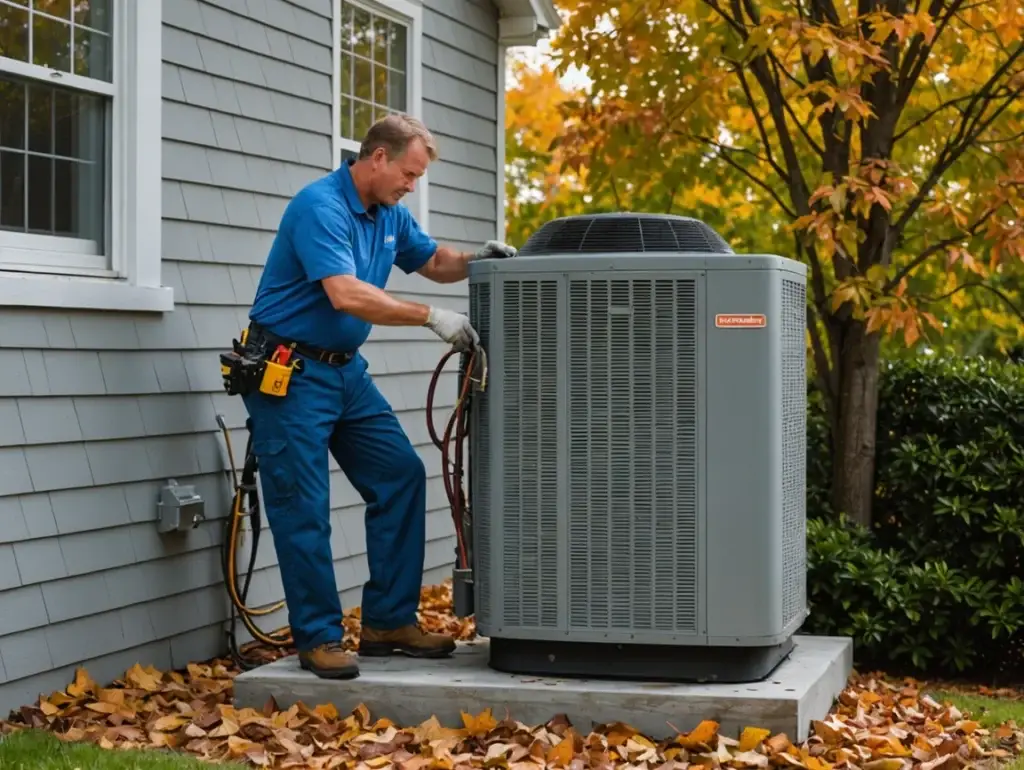[vc_row][vc_column][vc_column_text]As the summer heat bears down, a properly functioning air conditioning (AC) system becomes indispensable for indoor comfort. However, when faced with issues such as low refrigerant levels, the efficacy of your AC unit may be compromised. This article delves into the causes, symptoms, and implications of low refrigerant in AC systems and the necessary steps for diagnosis and resolution.
Causes of Low Refrigerant:
Low refrigerant levels in an AC system can stem from various factors, including:
- Leakage: The most common cause of low refrigerant is leakage from the AC system’s refrigerant lines or components.
- Improper Installation: Incorrect installation procedures or faulty connections during AC installation can lead to refrigerant leaks over time.
- Wear and Tear: Wear and tear on AC components, such as valves and seals, can also result in refrigerant leaks.
Symptoms of Low Refrigerant:
Recognizing the signs of low refrigerant levels is crucial for timely intervention. Common symptoms include:
- Reduced Cooling Performance: A noticeable decrease in the cooling capacity of your AC system, resulting in insufficient cooling of indoor spaces.
- Warm Air Output: The AC unit may blow warm or lukewarm air instead of the expected cool air.
- Ice Formation: Ice buildup on the evaporator coils or refrigerant lines due to inadequate refrigerant levels.
- Hissing or Bubbling Sounds Audible hissing or bubbling noises emanating from the AC unit, indicating refrigerant leaks.
- Increased Energy Consumption: Low refrigerant levels force the AC compressor to work harder, leading to higher energy consumption and elevated utility bills.
Implications of Low Refrigerant:
Ignoring low refrigerant levels can have several adverse consequences, including:
- Reduced Efficiency: Low refrigerant levels hinder the heat absorption and transfer process, diminishing the overall efficiency of the AC system.
- Component Damage: Inadequate refrigerant levels can cause the AC compressor to overheat and sustain damage, necessitating costly repairs or replacements.
- Elevated Energy Costs: The compromised efficiency resulting from low refrigerant levels leads to increased energy consumption, which in turn translates into higher electricity bills.
- Comfort Issues: Insufficient cooling due to low refrigerant levels can result in discomfort and inconvenience for occupants, especially during peak summer months.
Diagnosis and Resolution:
Diagnosing and resolving low refrigerant issues require the expertise of qualified HVAC professionals. The process typically involves:
- Refrigerant Leak Detection: HVAC technicians utilize specialized equipment to pinpoint and assess the extent of refrigerant leaks within the AC system.
- Leak Repair: Once identified, refrigerant leaks are repaired using appropriate sealing materials or replacement components to prevent further leakage.
- Refrigerant Recharge: Following leak repair, the AC system is recharged with the appropriate refrigerant to restore optimal levels and ensure efficient operation.
Low refrigerant levels pose significant challenges to the performance and reliability of air conditioning systems. Recognizing the symptoms, understanding the implications, and promptly addressing low refrigerant issues through professional diagnosis and resolution is essential for maintaining indoor comfort, efficiency, and cost-effectiveness. By partnering with experienced HVAC professionals, homeowners can safeguard their AC systems against the detrimental effects of low refrigerant and enjoy uninterrupted cooling comfort throughout the summer.
[/vc_column_text][/vc_column][/vc_row]


